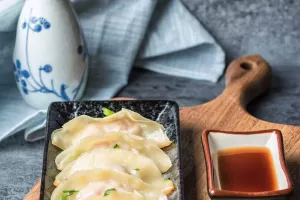When it comes to comfort food, pancakes have a global fan base.
International Pancake Day is a celebration of this universally loved dish, but the way pancakes are made and served can vary dramatically across different countries and cultures.
From thin crêpes in France to thick American stacks, the toppings and traditions are as diverse as the people who enjoy them. Let's take a flavorful journey around the world to see how different nations whip up and top their pancakes.
<h3>United States: Fluffy Stacks with Syrup</h3>
In the U.S., pancakes are a breakfast staple, known for their fluffy texture and generous size. Made from a batter of flour, milk, eggs, and baking powder, these thick pancakes are typically served in a tall stack. The most common topping? Maple syrup, of course!
However, variations abound, with fruit, whipped cream, and butter being popular additions. Some Americans also enjoy adding a side of eggs or hash browns for a savory twist. But at the heart of it, maple syrup remains the classic choice for this morning's favorite.
<h3>France: Delicate Crêpes with Sweet or Savory Fillings</h3>
In France, pancakes take on a thinner, more delicate form known as crêpes. Crêpes are versatile and can be enjoyed in both sweet and savory varieties. For sweet crêpes, Nutella, fresh berries, and powdered sugar are common toppings, while savory crêpes may be filled with cheese, cooked chicken, or even eggs. In Brittany, France, the crêpe tradition is particularly strong, and you'll find entire restaurants (crêperies) dedicated to serving these elegant, lace-thin pancakes.
How to Make Crepes | French Crepe Recipe
Video by The Cooking Foodie
<h3>Japan: Okonomiyaki – A Savory Twist</h3>
Japan's take on pancakes is entirely different from what you might expect. Okonomiyaki, which translates to "grill what you like," is a savory pancake made from flour, eggs, and shredded cabbage. It is often topped with ingredients like seafood, vegetables, and green onions.
Once cooked, it's dressed with a tangy sauce, mayonnaise, and bonito flakes (dried fish). This dish is often prepared right at the table on a hot grill, making it as much a social event as it is a meal. It's a world away from sweet pancakes but beloved nonetheless.
<h3>Mexico: Hotcakes with a Local Flavor</h3>
While American-style pancakes have influenced breakfast menus in Mexico, locals have put their own spin on them with "hotcakes." These pancakes are often thinner than their American counterparts and served with unique toppings like cajeta (a caramel-like sauce made from goat's milk), sweetened condensed milk, or fresh tropical fruits like mango and papaya. It's a sweet, satisfying dish that perfectly combines American influence with Mexican flair.
<h3>Ethiopia: Injera – A Pancake with a Purpose</h3>
Injera, the Ethiopian pancake, isn't just a dish—it's also a utensil! Made from teff flour, this spongy, sour pancake is served alongside stews and curries, where diners tear off pieces of injera to scoop up their food. Injera's unique flavor and texture make it a distinctive pancake, and it's a fundamental part of Ethiopian cuisine. While it may not be topped with syrup or fruit, it plays a crucial role in one of the world's most flavorful culinary traditions.
<h3>Sweden: Pancakes with Lingonberries</h3>
In Sweden, pancakes are thinner and smaller than American pancakes but thicker than crêpes. Known as pannkakor, they are often served with whipped cream and lingonberry jam. The tartness of the lingonberries pairs perfectly with the soft, buttery pancakes, making this dish a favorite in Swedish homes.
Pancakes may have humble beginnings, but their global appeal has given rise to an incredible variety of styles, toppings, and traditions. Whether you prefer a stack of fluffy pancakes drenched in maple syrup, savory okonomiyaki, or a delicate crêpe with Nutella, there's a pancake for every palate.
On International Pancake Day, take a moment to explore a new way to enjoy this beloved dish from a different corner of the world!





